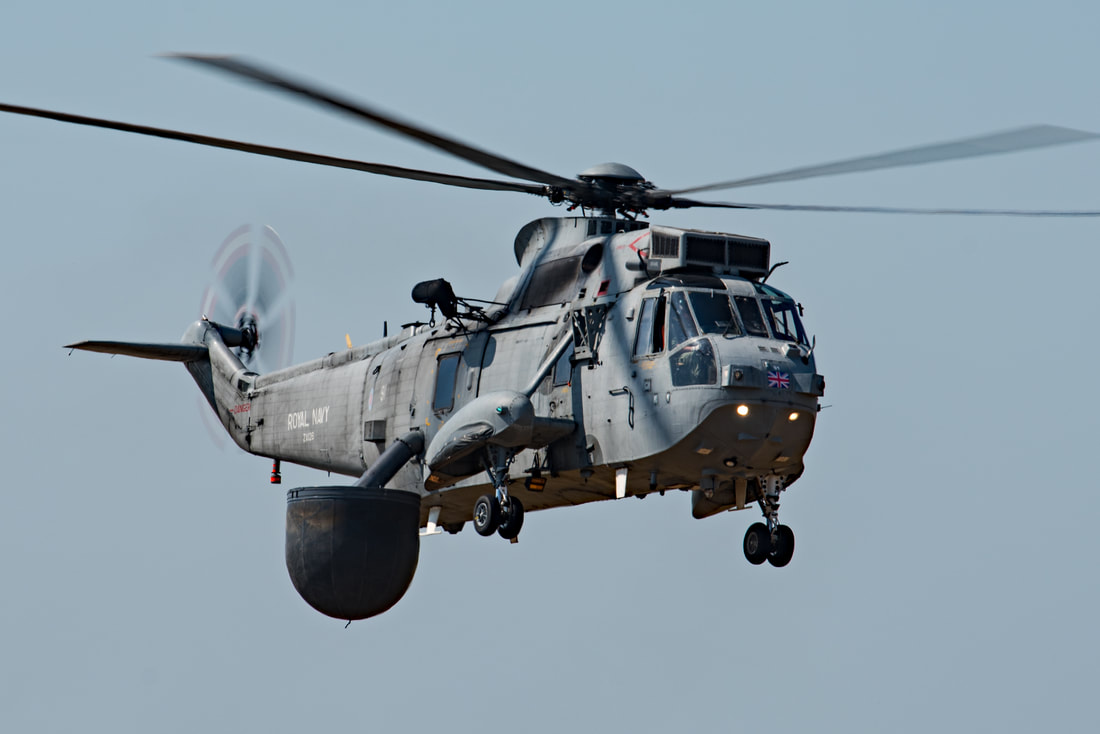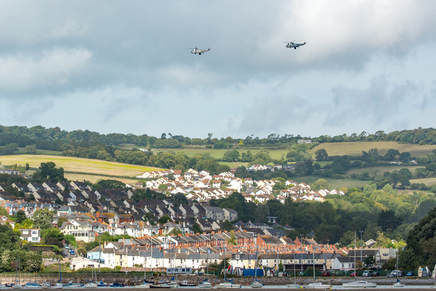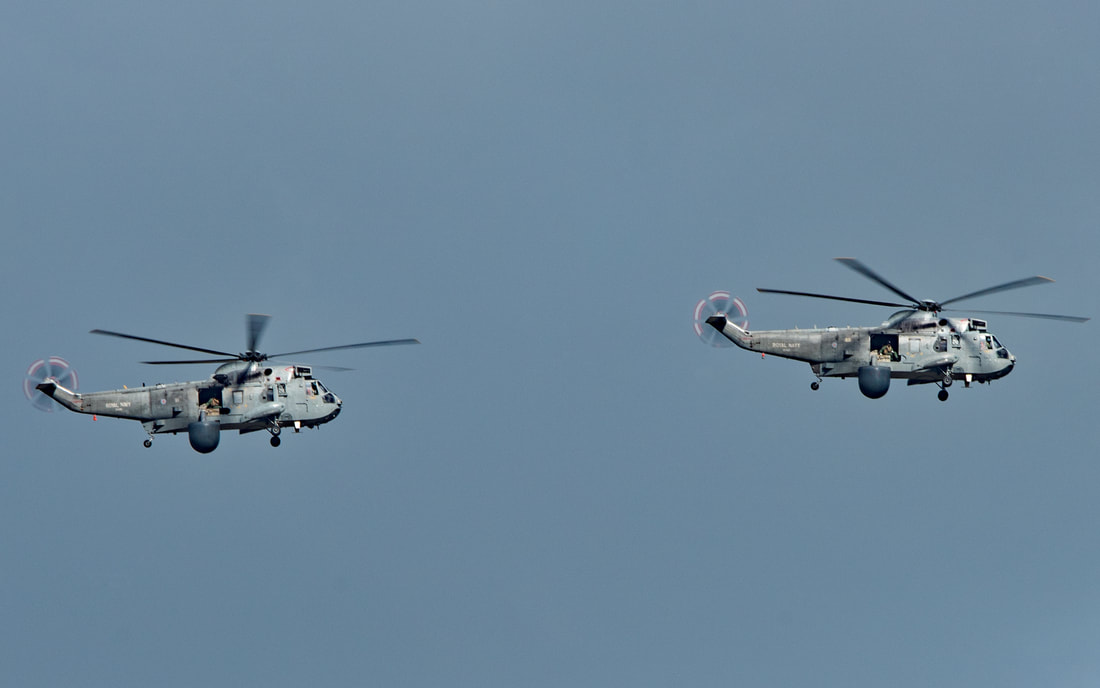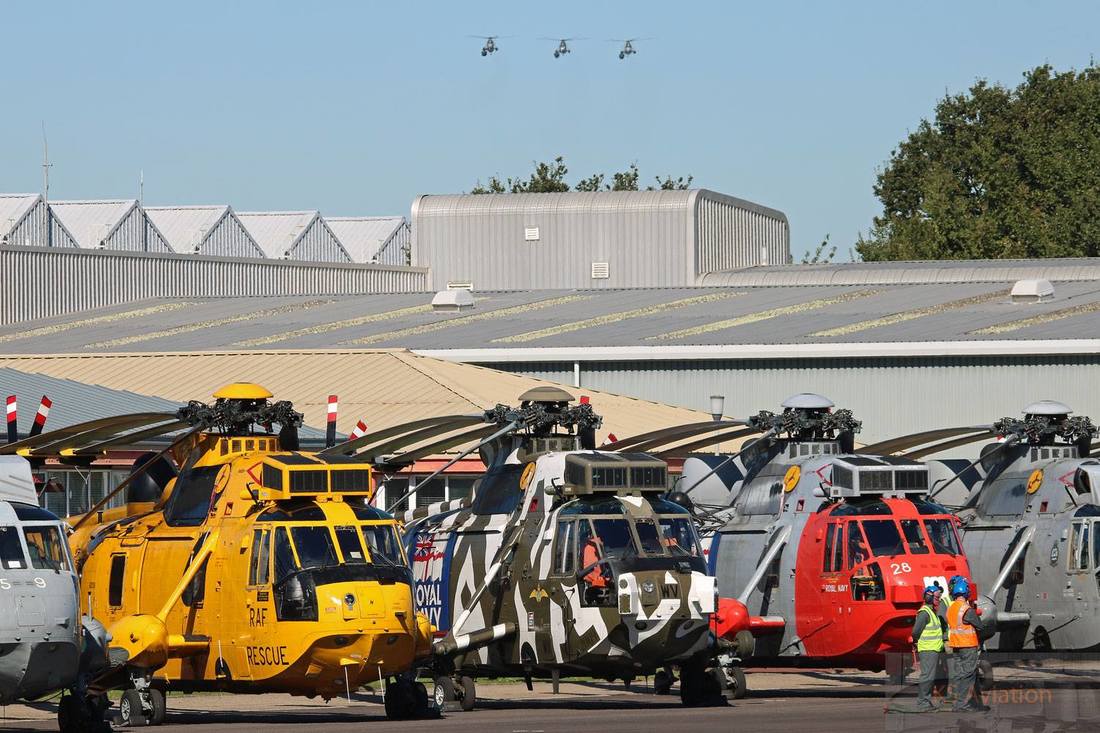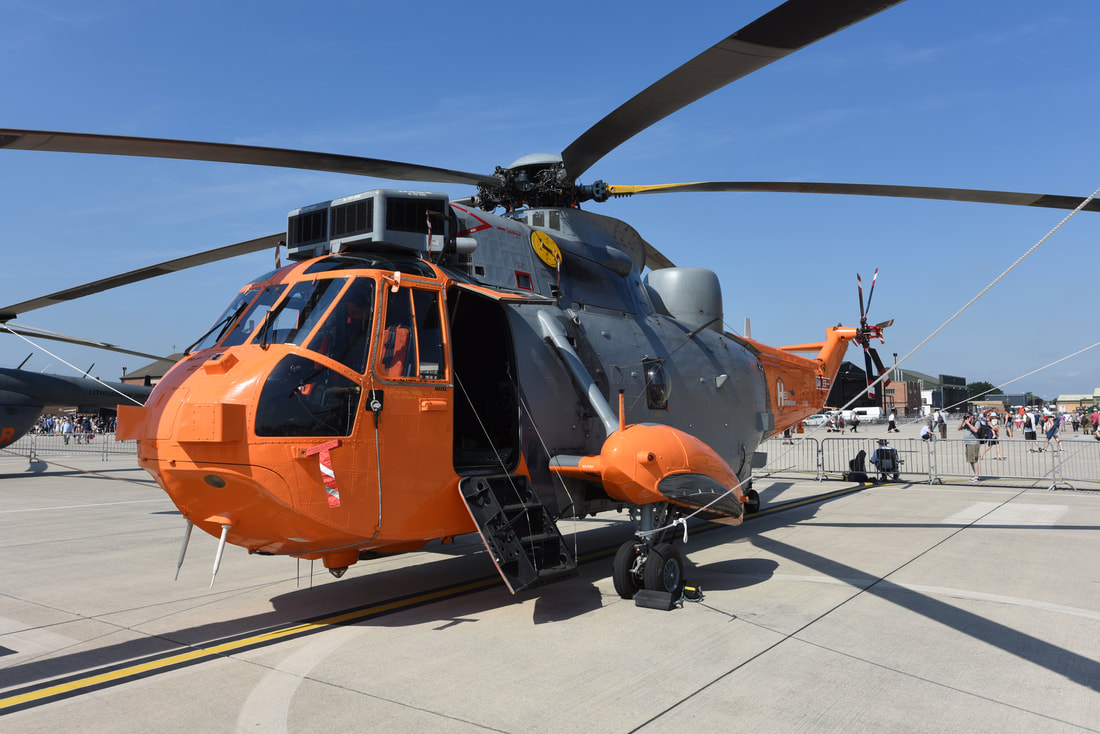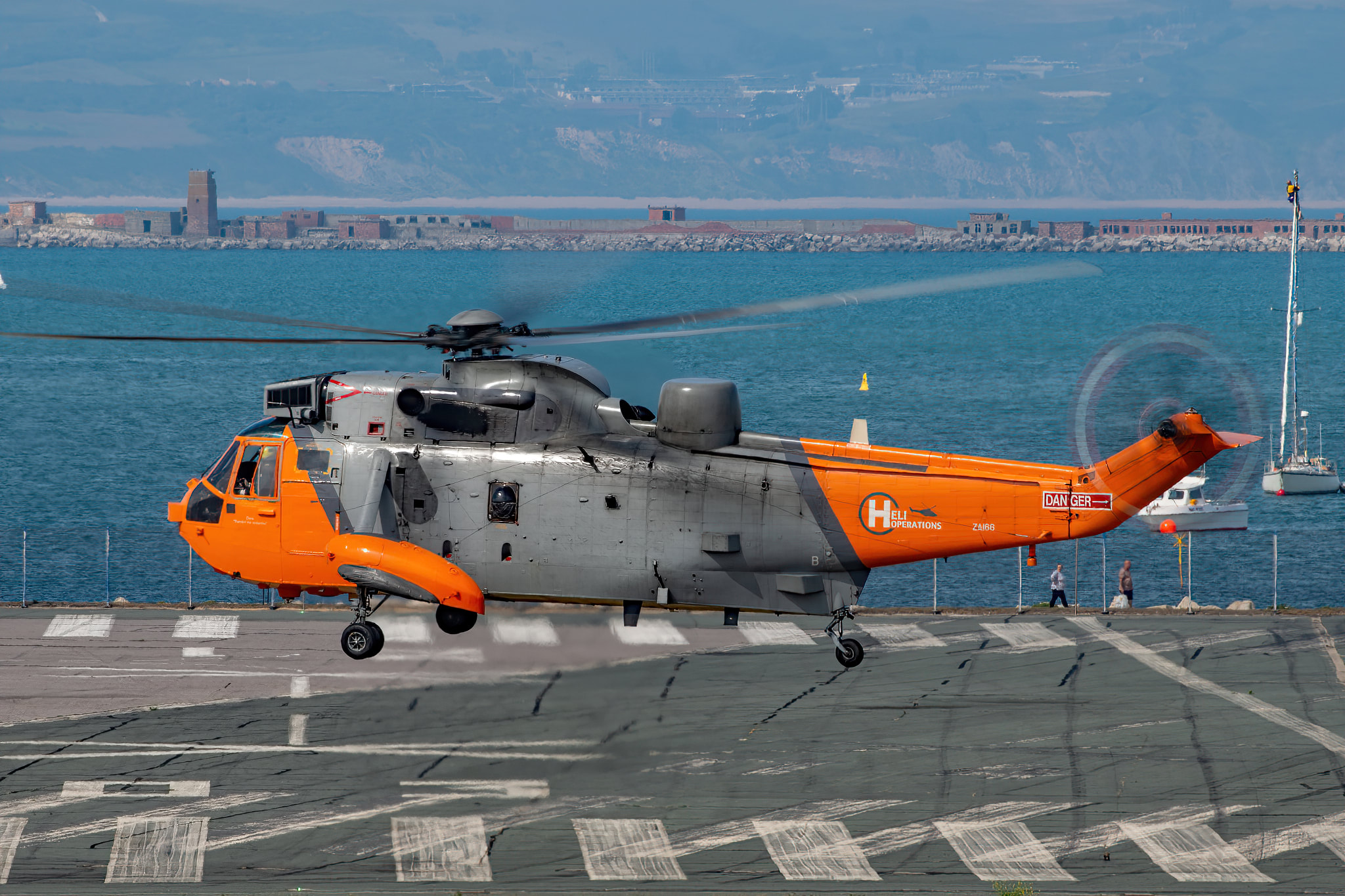Sea King Farewell
During the Falklands War, which began on 2 April and ended on 14 June 1982 a number of lessons of modern warfare were learned, not least, the need for effective airborne early warning (AEW). For many years the Royal Navies AEW requirements were fulfilled by Fairey Gannet AEW aircraft, but this ended in 1978 when the Fleet's last carrier HMS Ark Royal was decommissioned, after this there were no carrier-borne AEW assets available.
When the British fleet sailed for the Falklands to confront the Argentines they went without AEW cover. The lack of AEW radar was exploited by the Argentinians which allowed their aircraft to mount low level attacks with little or no warning. This resulted in a number of Royal Navy ships being lost before the conflict's end, during which the UK's forces never bridged the AEW gap.
To plug this lack of resource in the conflict's wake, a number of Westland Sea King helicopters were fitted with Thorn-EMI Searchwater radars, which were fitted on a swiveling inflatable mount on the fuselage of the helicopter. When airborne the radar was lowered into position on its mount to give over the horizon coverage for attack and early warning purposes.
From 1982 on Sea Kings have been used to provide radar early warning for the fleet with the final variant in service being the ASaC7 (Airborne Surveillance and Control 7) variant. The last ASaC7 Sea Kings, or 'Baggers' as they are known are due out of service at the end of September 2018.
When the British fleet sailed for the Falklands to confront the Argentines they went without AEW cover. The lack of AEW radar was exploited by the Argentinians which allowed their aircraft to mount low level attacks with little or no warning. This resulted in a number of Royal Navy ships being lost before the conflict's end, during which the UK's forces never bridged the AEW gap.
To plug this lack of resource in the conflict's wake, a number of Westland Sea King helicopters were fitted with Thorn-EMI Searchwater radars, which were fitted on a swiveling inflatable mount on the fuselage of the helicopter. When airborne the radar was lowered into position on its mount to give over the horizon coverage for attack and early warning purposes.
From 1982 on Sea Kings have been used to provide radar early warning for the fleet with the final variant in service being the ASaC7 (Airborne Surveillance and Control 7) variant. The last ASaC7 Sea Kings, or 'Baggers' as they are known are due out of service at the end of September 2018.
Farewell Flypast
On the 19 September 2018, delayed by a day due to poor weather, a farewell flypast was undertaken by two Sea King ASaC7s, ZA126 (191) and ZE420 (189) of 849 NAS which took off from RNAS Culdrose and flew a route around the South - West of England which included Teignmouth in the east, as seen below, to Padstow and St Ives in the west.
These are the last Sea Kings in use by the UK's military and their retirement brings to an end nearly 50 years of faithful service. (Click on images to enlarge)
These are the last Sea Kings in use by the UK's military and their retirement brings to an end nearly 50 years of faithful service. (Click on images to enlarge)
The Final Flight
Following on from the Farewell Flypast a final flight by three Sea King ASaC7s, XV714 (188), ZA126 (191) and ZE420 (189) took place from RNAS Culdrose to HMS Sultan Gosport on 26 September 2018. Captured on the day by Kevin Shaw the Sea Kings are seen here arriving at HMS Sultan, where a line up of the Marks from I to VII was staged on the day. (With thanks to Kevin Shaw for the use of his photos)
Not Quite the End
Heli-Ops based at Portland still fly several ex-Fleet Air Arm Sea Kings to train Search and Rescue pilots and at the time of writing (September 2018), this training continues.
Heli-Ops based at Portland still fly several ex-Fleet Air Arm Sea Kings to train Search and Rescue pilots and at the time of writing (September 2018), this training continues.
